Designing Your Own Board Game Ks2
Games are great learning tools, we learn all kinds of things from them, from teamwork and fair play to math and problem solving skills. Having kids create their own games takes the learning, and the fun, to the next level!
This course will walk you through the process of planning, designing and building a board game. Work through this course with kids of any age who show interest in playing and making their own games.
Introduction
Welcome to this course on board game design! This course will walk you through the process of planning, designing and building your own board game. The course is divided into seven sections. The first two sections will give you a brief overview of the history of board games and information about what different components and ideas make up a game. Then from the end of section two until section six it will take you through the process of creating your own game. I hope you enjoy going through this course as you create your very own game.
Learning About Board Games
Board Game History
A Very Brief History of Board Games
Origin of Board Games

Board games have been around for a lot longer than most people think. In fact, board games are so old, we don't even know when the first one was created! One of the oldest known board games is called Senet. It was popular with the pharaohs of Egypt around 3100 BC, that's over 5,000 years ago!
Some games that were created thousands of years ago are still being played today. A game called Backgammon which is still popular today is thought to have originated 5,000 years ago. The Chinese game Go has been around for over 4,000 years and is still played today.
Important Board Games of the Past
Chess
Chess is thought to have originated in India approximately 1,500 years ago and is still popular today not only as a game to be played for fun, but also for competition with the first official World Chess Championship being held in 1886. Chess is still played regularly by over 600 million adults today!
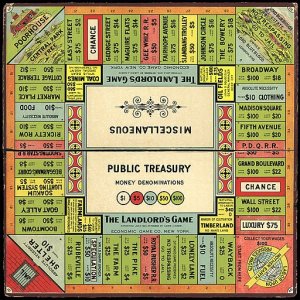
The Landlord's Game
In 1902 Elizabeth Magie designed The Landlord's Game which eventually went on to be published in 1913. The game featured a board with a track around the outside edge. The track consisted of blocks that represented properties which could be purchased and rented. Magie created the game to show how rent made landowners rich and renters poor. Does this game look familiar? Years later Parker Brothers released a game called Monopoly which was based heavily on The Landlord's Game.
Settlers of Catan
Settlers of Catan was designed by Klaus Teuber and published in Germany in 1995. It became one of the first "euro-style" games to become popular outside of Europe. A "euro" game is typically a game that emphasizes strategy over luck and conflict, can be played in a fairly short amount of time and is somewhat easy to learn. Settlers was one of the first of these games to be popular in North America and led to the increasing popularity of other euro games worldwide. Settlers is often referred to as a "gateweay game" meaning that for many people it was the first non-traditional board game they played and got them into the board game hobby.
Board Game Elements
The Elements of a Game
It is difficult to pin down exactly what makes something a game. Board games are getting more and more creative and stretching the limits of what we consider games. This creativity is a good thing and has resulted in all sorts of new and fun games. For the sake of this course let's look at three elements that can make up a game. Most board games will have at least one of these three elements and some will include all three.
Strategy
Strategy in board games means that the game lets you make choices and those choices determine how well you do at the game. Most games will have some element of strategy. Strategy is an important element of games because it allows the players to effect how the game plays out. Games without strategy will tend to feel boring quite quickly. Take the simple card game "War" for example. There are really no decisions to make in this game as you are simply flipping over a card and comparing it with the other players' card. If you wanted to add the element of strategy to the game of War you could, for example, have a player always draw two cards and decide which one to play.
Luck
Luck in board games means that something can happen in the game that you can't control. For example, dice add the element of luck to a game because when you roll dice you don't control what the numbers will be. Luck is an element included in a lot of games and often leads to exciting moments in games. Dicing the exact number you need on your last turn to win the game is a moment that makes you jump out of your seat!
Dexterity
Dexterity in board games means that physical actions/movement affect how well you do at the game. Some examples games with dexterity include Jenga, Crokinole and Flick 'em Up. Dexterity can be a great game element to use in games designed for kids since it is something that kids understand easily.
Activity
- Play some games that you have and look for the elements of Strategy, Luck, and Dexterity.
- Make a list of your 3 favourite games.
- What do like about these games?
- What do these games do the same?
- What do these games do differently?
Board Game Mechanics
Game Mechanics
Board game mechanics (no, not the kind that fixes your car) are what defines how a game is played. Everything from taking turns to rolling dice can be a game mechanic. Board games will usually have several mechanics that work together to make up the game rules. Games can use the same mechanic as another game and still be very different to play. For example, Monopoly and Settlers of Catan both use the mechanic of rolling dice but they are very different games.
New game mechanics are being thought up all the time so there is no complete list of them but here are a few that you may have seen in games before.

On the Brink (pictured above) uses a game mechanic called "Movement Programming" in which players choose a series of actions they want to perform.
Action Points –Players have a certain number of actions they can perform on their turn. These actions could be things like moving, drawing a card, etc. Example game: Forbidden Desert
Area Control –Players try to control an area of the game board. Example game: Risk
Co-operative Play –Players work together against the game. Example game: Pandemic
Movement – Players move around the board, this may be a path determined by the game or the player may have options on where to move. Example game: Mice and Mystics
Resource Management –Players collect resources and can spend them to do something in the game. Example game: Settlers of Catan
Trading –Players trade with each other, usually cards or resources in the game. Example game: Bohnanza
Worker Placement –Players place game pieces on the board in order to gain a benefit such as collecting resources. Example game: Stone Age
These are just examples of the many board game mechanics out there. If you would like more information on board game mechanics here is a great video by Tom Vasel of The Dice Tower that explains a lot of common board game terms.
Activity
- Think of and/or play some games that you have, what kind of mechanics do they have?
- Pick one game and list all of the game mechanics you can find in it.
- What game mechanics do you find the most fun?
- What are some other game mechanics you have seen in games?
Planning Your Game
Theme

Most games are created based on a theme. A theme is the game's story and setting. It tells a player what the game is about. Ticket to Ride is a game about building railways between cities, Pandemic is a game about saving the world from deadly diseases, Risk is a game about taking over the world with your army. Not all games have much of a theme, checkers for example doesn't really have a theme, these games are often called "abstract" games.
Most of the time games are designed by first thinking of a theme. Sometimes people will design games with certain game mechanics and add a theme to it later but usually it is easier to start with a theme.
Throughout the rest of this course we will be designing a game which you can use as an example. Remember that this is just an example. Feel free to use ideas from our example game however I would suggest you come up with your own game ideas, it will be way more fun that way!
Our example game theme will be fighting forest fires.
Activity
- Choose a theme for your game
- Choose something you are interested in or enjoy
- Remember, your theme can be anything, it's up to you!
- Research your theme
- Read books about theme
Goal
Every game has a goal related to the theme, the goal is what determines how players can win the game. It might be getting to the end of the track the fastest, collecting the most money, growing the largest pumpkin, anything! Just make sure your goal fits with the theme you chose.
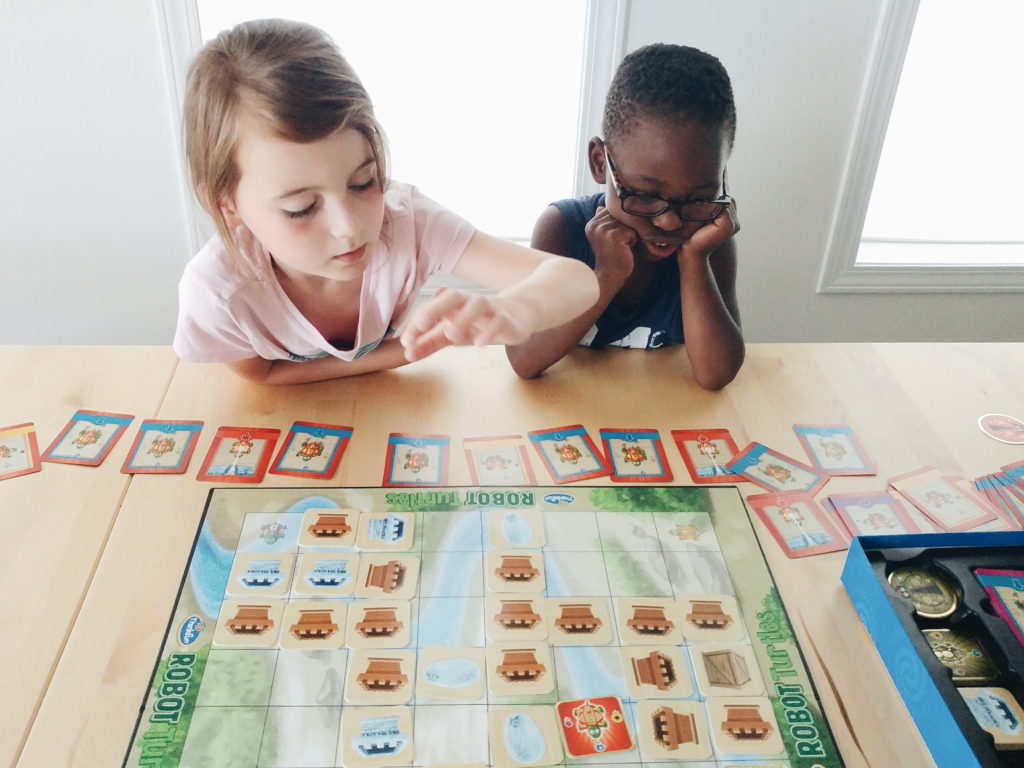
The goal of Robot Turtles (pictured above) is to guide your robot to the gem.
Activity
- Choose a goal for your game
- Questions to think about:
- Will players work together or against each other?
- Does your goal make sense with your theme?
Example Game Goal
Put out all of the fires before the fire destroys the town.
Mechanics
Game mechanics are just a fancy way of talking about how your game works. When you are thinking of game mechanics you are thinking of the rules and how your game will be played. The game mechanics you want to use in your game should fit with your game theme and work together with your goal.
Coming up with rules for your game can take a while. Don't worry if you have some trouble thinking of how your game should work. It is a good idea to start with just a few ideas, you can always change them and add more ideas after you see how it works.

When deciding on game mechanics for your game you can look at the list of mechanics in Section 1 but remember that these are only a few examples. Be as creative as you want and make rules that you think will be fun to play. Remember that you can keep the rules and mechanics simple at the beginning.
Activity
- Come up with some rules (game mechanics) for your game
- Questions to think about:
- Do your rules let players reach the goal?
- Do your rules let player make choices in the game?
Example Game Mechanics:
- There will be a game board with different areas of forest with a town in the middle
- The fire will start from the outside of the board and move towards the town
- Players work together (co-operative game) to put out the fire
- Players will spend action points to try to put out the fire, actions they can use are:
- Move
- Put out fire on your space
- Special action on card
- After each player goes the players will dice to see how fire will move and grow
- Players will choose characters with special abilities that help them put out the fire
- Dispatcher – help others move
- Pilot – put out a fire anywhere on the board when in town
- Medic – help injured firefighters
- Smokejumper – move from town to any space
- Players win if they put out all of the fire
- Players lose if the fire reaches the town
- Turn order:
- Player performs actions
- Roll dice to see where fire expands
Elements
Remember the three elements of games mentioned earlier, Strategy, Luck, and Dexterity. Your game should have at least one of these elements. The game mechanics you choose usually determine which elements your game will have. Some mechanics, such as dice for example, will add the element of luck. Others, such as trading or action selection, add strategy to your game. The dexterity element is added when your game mechanics involve anything that makes the player do some type of physical movement to gain a benefit in the game.

Activity
- List your game mechanics and put them in the categories of Strategy, Luck and Dexterity
Example Game Elements
Our example game includes the elements of luck and strategy. Luck will be included because we will use a dice to determine how the fire spreads in the forest. Strategy is included because players get to choose which actions to take to put out the fire.
Story
Now that you have a theme and some rules for your game it can be fun to add a bit of story about what is happening in the game. This is not required for the game but it can often make the game more fun to play and can even help you think of ways of making your game better.
Your story can include the setting of your game (where it's happening), the plot (what is happening), and the characters (who it's happening to).
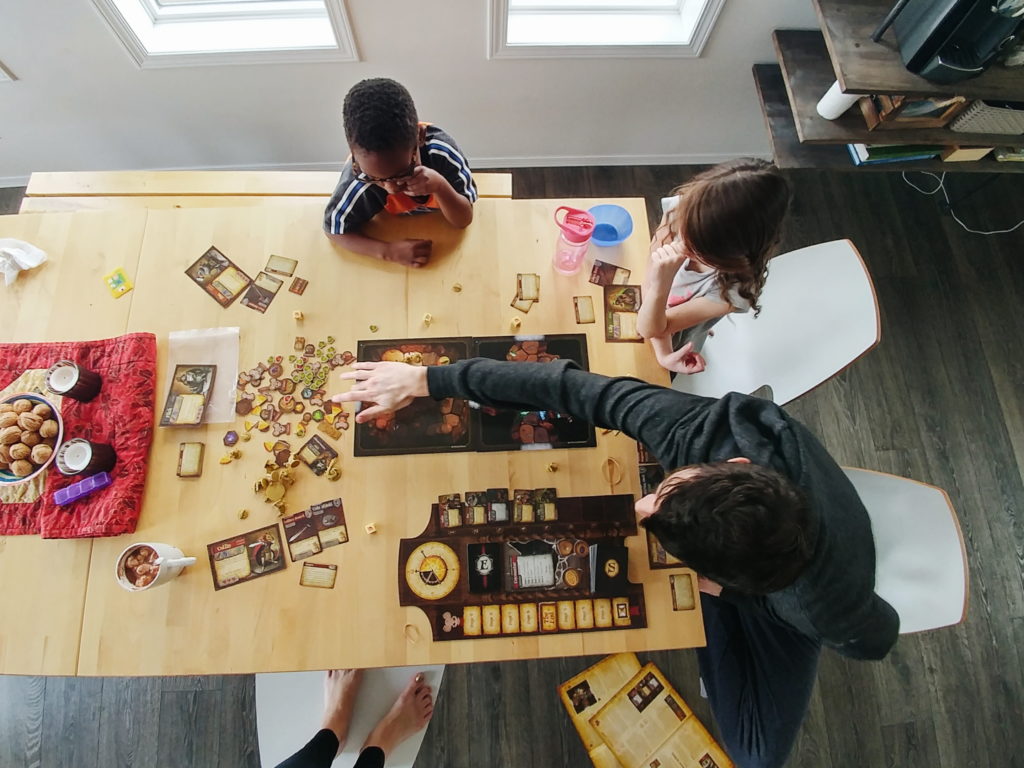
Mice and Mystics (pictured above) is an example of a game with a great story.
Activity
- Write a short backstory for your game
Example Game Story
The small town of Green Hills is in trouble. An unusually dry summer has resulted in a large amount of wildfires in the area and the town is now surrounded by fire! Can you help put out the fires before they make it to town?
Designing and Prototyping
Now that you have an idea of what your game is going to be about and how it will work it's time to start making your game!
An important part of making a board game is making something called a prototype. A prototype is the first model of your game. It will have all of the pieces and rules you need to start playing your game. Your prototype should be simple and easy to make quickly. It's important to remember that when you design a game you will usually need to go back and change the rules a lot of times before your game is finished. This is why you want your first prototype to be simple and easy, because it is going to change. Don't spend hours designing the perfect looking cards because chances are after you test your game you will need to change some cards and all the time you spent on those cards will be wasted.
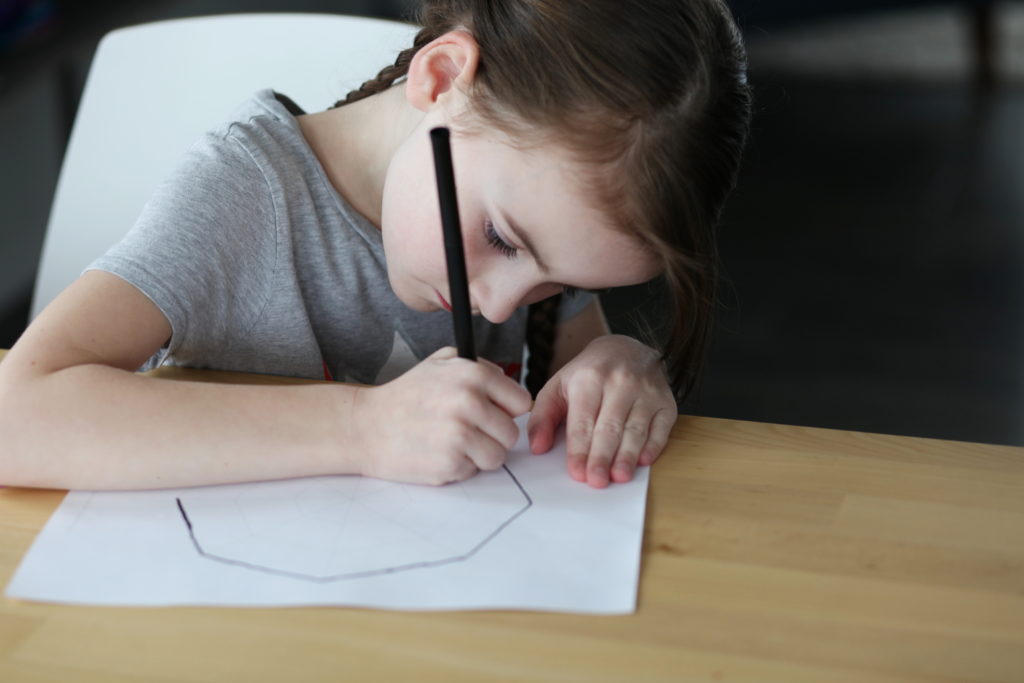
Your first prototype can be made with just a pencil and pieces of paper. It should include all of the parts you need to play your game but it is okay if these parts are just simple pieces of paper. If your game includes components (like dice for example) that you have in a different game that you have at home you can borrow them from that game to use to test your game.

Activity
- Make a list of the pieces your game will need based on your game mechanics and rules
- Write out the rules for your game
- Build simple prototypes of the game components (remember to keep it simple!)
Playtesting
Playtesting is one of the most important parts of board game design. Playtesting is exactly what it sounds like, testing the game by playing it! When you playtest a game you are playing it while looking for ways to make the game better.
Don't be discouraged if the game doesn't work very well or seem very fun the first time you play it. Most games aren't! That is why you playtest, to find parts of the game that could be made better.
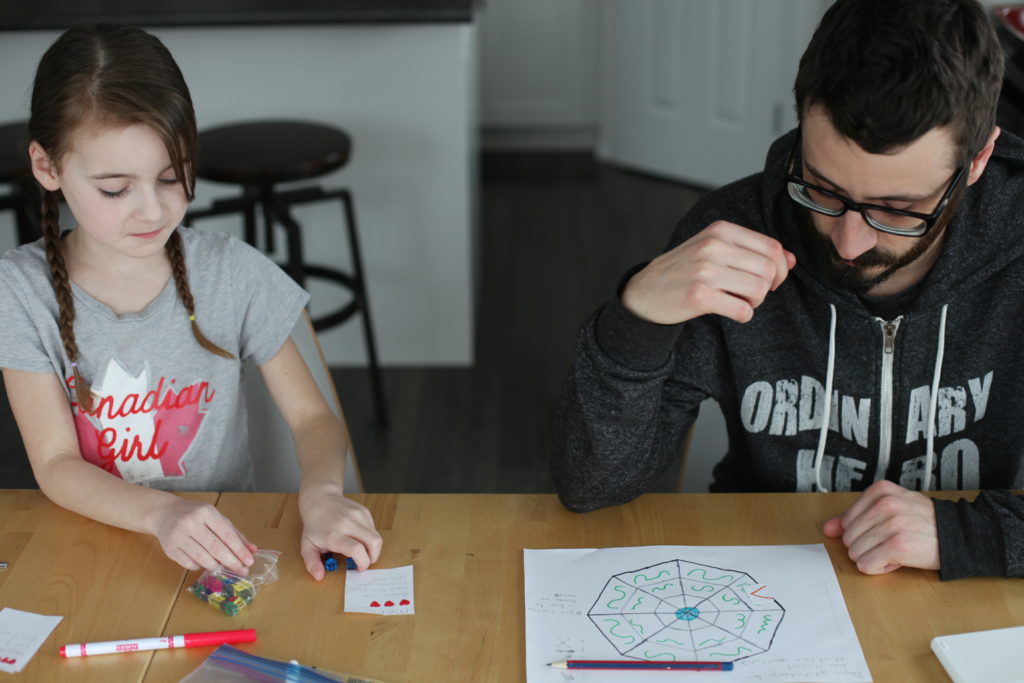
Playtesting Tips
- Test your game multiple times
- For more complicated games, try playtesting smaller portions of the game at a time
- Try out new things as you think of them while playing
- If you can, have other people playtest your game while you just watch but only do this after you've tested and made changes (more about this later) to the game a few times first
Activity
- Playtest the game
- Write down your thoughts
- What parts worked? Which parts didn't work?
- Which parts were fun? Which parts were not fun?
Making Changes
No game will be perfect the first time you play it. Most of the time a game will need a lot of changes as you test it and realize the parts that work and the parts that don't work.
Once you have finished a playtest look through the notes that you made about it and make changes to try to make the game better.
Based on your tests you may now need to make completely new components from your game to replace things that didn't work or add new things to improve the game. This is why it is important to not spend too much time making your test components, they may not last long!

When making changes to your game based on your play test try not to change too many things at once. Remember that changing one part of your game could affect how another part works.
Activity
- Make changes to your game prototype and rules based on your playtest results
- Playtest your game again and make more changes, keep repeating this until you are happy with how the game works
- Optional: Once you feel like your game is almost finished, get someone else to play your game and have them write down their thoughts to see if anything should be fixed
Building Your Game
Now that your game rules and mechanics are finished, it's time to make a final version of your game. Be as creative as you like in how you build the final version of the game. How you create your game will depend on the game components and how fancy you want to make it. Everything from cardboard and construction paper to components designed on a computer and printed professionally is fine, just do what works for you! There are a lot of resources online that can help you create great looking pieces and many craft shops will have wooden cubes and other pieces that can be used for your game.
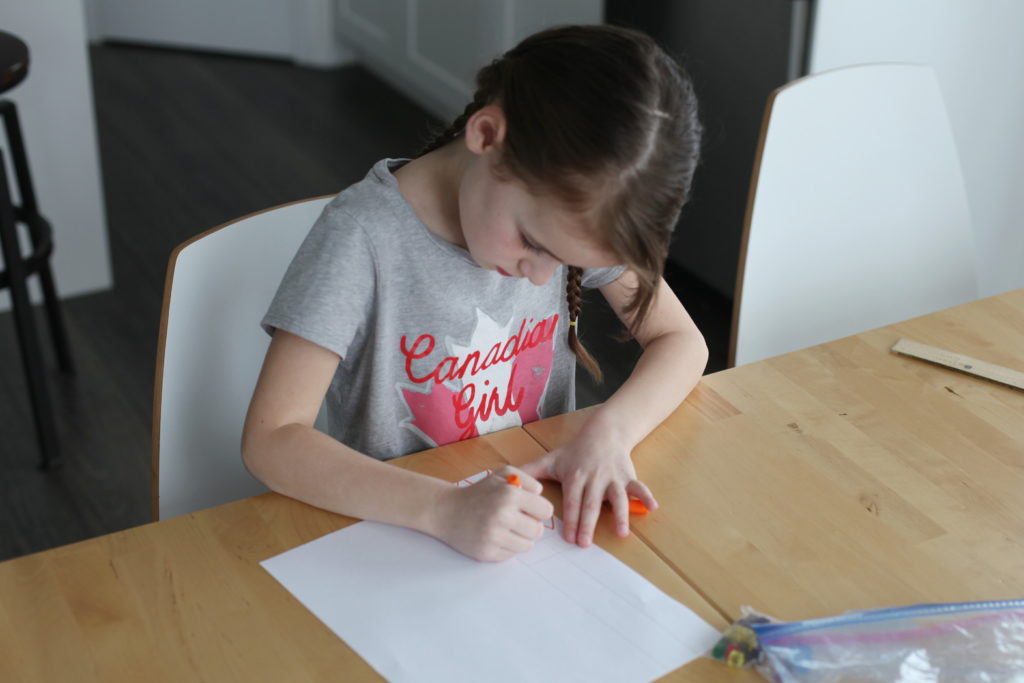
Activity
- Make final versions of your game
- Write out a rulebook that explains how to play your game
Resources
These resources may be helpful when creating the prototype for your game.
Playing Card Template
Hexagonal Grid Board Template
Web Grid Board Tempate
Square Grid Board Template
Designing Your Own Board Game Ks2
Source: https://www.intentionalhomeschooling.com/course-design-your-own-board-game/
Posted by: glennsucts1979.blogspot.com


0 Response to "Designing Your Own Board Game Ks2"
Post a Comment